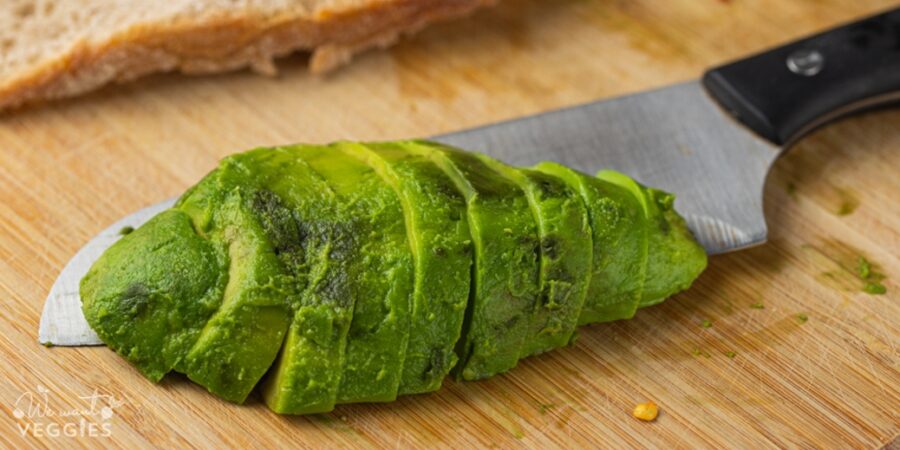Whether in a bowl of guacamole or on creamy, crunchy avocado toast, avocados are all they’re cracked up to be. If only picking the perfect avocado was as easy as the eating part! Of course, avocados possess that hidden talent of appearing ripe even when they’re going bad right before your eyes. So, what’s the secret? How do you buy the best avocado?
These tricky fruits can be deceiving. You must look beyond the appearance of the outer skin. Check out these 6 tips to help you score on your next avocado hunt!
1. Timing is everything.
Are you always picking unripe or overly ripe avocados? Chances are good that your timing is off. Your timing determines the level of ripeness you should aim for and how you’ll store your avocado. So, you’ll want to align your purchase decision with when you actually plan to use the avocado.
Let’s say, for example, you’re hosting a dinner party tonight and want to treat your guests to a big bowl of guacamole. You’ll want to pick a ripe, ready-to-eat avocado. You won’t pull off great guacamole if you choose an underripe or overripe avocado. It just won’t happen!
On the other hand, if you intend to use your avocado in a few days, choose a firm and yet-to ripe one. This also applies to every-day use. If your kids enjoy breakfast that’s heavy on avocado toast and smoothies, go for the firm, unripe avocados and store them in the refrigerator. That way, you can pull them from the fridge as they ripen.
Luckily, refrigeration slows ripening process, making avocados last longer for long-term use. For reference, unripe avocados often take between four to five days to ripen if kept under room temperature. Even more so, if refrigerated.
Speaking of ripeness, how do you get that right?
2. Color never lies.
Start paying more attention to the color. You can determine how ripe an avocado is by looking closely at the color of its outer skin. Typically, ripe avocados have a dark-green, almost black tint. In contrast, unripe ones appear bright green. Roughly 80% of avocados become darker when mature, so this part should be easy.
We have a few exceptions, though. For instance, there are specific variations of avocados that maintain the green color even when ripe. These include both the Reed and the Fuertes varieties. Some types, such as the Hass, transition into a black or pale-purplish tint once ripe. One thing we know for sure–if the avocado is super-black and mushy, leave it alone!
It’s challenging to match all avocado varieties to their specific color, so you’ll want to add some other tests to your repertoire.
3. Give it a gentle squeeze.
If the color seems confusing, bring in your sense of touch. Squeezing your avocado is another great way of gauging ripeness and picking the best. This method won’t let you down. Simply place the avocado in your hands and apply mild pressure using your fingers. If the avocado quickly gives in to gentle pressure, that’s an indication of ripeness. If, on the other hand, it remains firm or stiff when you press, that’s one unripe avocado.
While you’re at it, pay attention to any overly-squishy feel. An avocado that almost feels like a thick smoothie when pressed is too ripe and probably spoiled. This mushiness will often be accompanied by an overly-black color. Refrain from buying these avocados, as there’s a strong likelihood that they’ll go bad if they aren’t already.
Bonus Tip: Be careful not to use your fingertips while squeezing since you might break the avocado’s skin. If you want to buy the best avocado, don’t accidentally wreck the good ones!
4. Consider the small ones.
Got your hands on an almost-black and perfectly squeezy avocado? Good for you. Is this any assurance that it tastes good, too? Turns out, no. The thing is, while predicting the taste of avocados is a tricky affair, you can pick up a few hints from their size. Large avocados with super-smooth skin tend to be watery, while the little Hass varieties pack an indulgent flavor. Genetically speaking, those larger Florida varieties tend to hold less fat—a contributor to that watery taste. Regardless, it’s so satisfying gliding a knife through them to whip up a low-calorie salad. Any well-picked avocado will be much better than no avocado at all!
Smaller Hass avocados have higher quantities of healthy fats, making them creamy and tastier. So, if you’ve been shying away from the small avocados, you have no idea what you’re missing. These little varieties taste like magic when used to make guacamole or sprinkled with salt and pepper and eaten as fruit. (That’s right. Avocado is a fruit!)
5. Just say no to dark spots or blemishes.
The dark spots on an avocado often indicate overripe spots or bumps. However, don’t confuse blemishes with the bumpy texture of ripe avocados. This texture is very normal when an avocado ripens. What you should look out for is the black, distinct dots on the skin of the fruit. These spots are more noticeable on avocados that turn dark green when ripe.
6. Look at those avocado stems.
Take a look at that small dot on top of your avocado. These stems help guide you on how to buy the best avocado. A stem that has turned black is a strong indication of a spoiled avocado. Avoid those nasty avocados at all costs!
Bonus Tip: The next time you’re shopping for avocados, make sure you mix ripe ones, almost-ripe ones, and unripe ones. This way, you can always use them at your own pace without worrying about them spoiling.
While it’s difficult to spot a ripe avocado just by looking at it, the tips above will help you buy the best avocados on your next grocery run. If you’re in a hurry, however, just go for the dark-green avocados that yield to gentle pressure.


